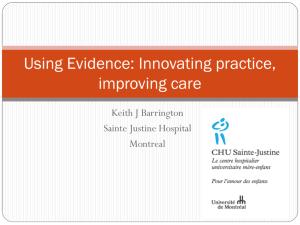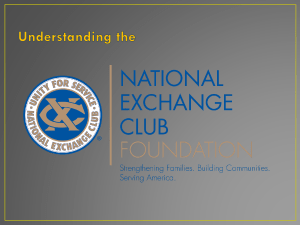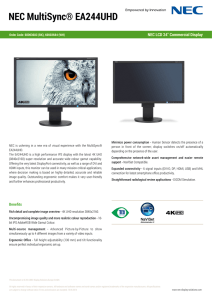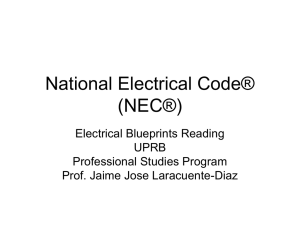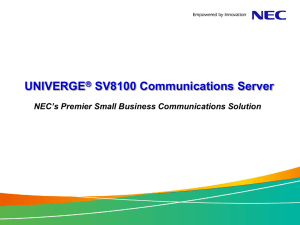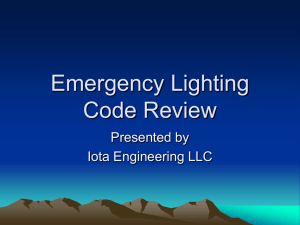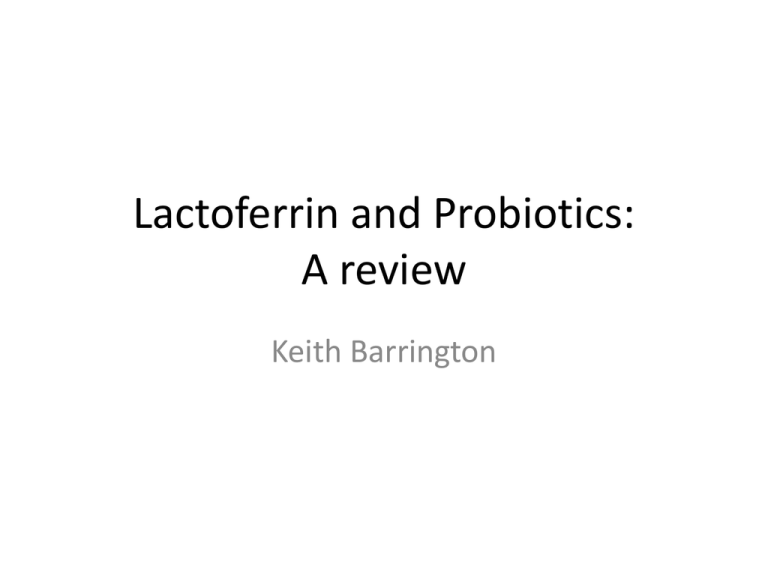
Lactoferrin and Probiotics:
A review
Keith Barrington
Lactoferrin
w h e y includes lactoferrin, beta-lactoglobulin, alpha lactalbumin
glycomacropeptide, and immunoglobulins,
Protein composition of milk
• Breast fed term infants receive about 100 mg of lactoferrin a day
during the period of production colostrum, and rather less
afterward.
• Very little lactoferrin in cows milk, even less after modification.
The known and postulated iron-transport processes believed to be operating in the neonatal
duodenum.
Collard K J Pediatrics 2009;123:1208-1216
©2009 by American Academy of Pediatrics
Three dimensional structures of diferric human LF (Farnaud and
Evans, 2003) and bovine LF (Moore et al., 1997). The location of
lactoferrcin within the protein is shown in yellow and the two
ferric ions are in red
Lactoferricin
• Lactoferrin is partially hydrolysed in the
stomach
• Which creates lactoferricin, which has an
increase antibacterial activity.
• Lactoferrin also seems to promote the growth
of probiotic organisms
Lactoferrin
Rogan et al. Respiratory Research 2006
7:29 doi:10.1186/1465-9921-7-29
Legrand D: Lactoferrin, a key molecule in immune and
inflammatory processes. Biochem Cell Biol 2012, 90(3):252-268
Jenssen H, Hancock REW: Antimicrobial properties of
lactoferrin. Biochimie 2009, 91(1):19-29.
Table 2. Bacterial and Fungal Late-Onset Sepsis, Fungal Colonization, Progression From
Colonization to Infection, Mortality in the Study Groups.
Manzoni, P. et al. JAMA 2009;302:1421-1428
Copyright restrictions may apply.
Table 3. Multivariable Logistic Regression Analysis Controlling for the Most Important Risk
Factors Possibly Associated With Late-Onset Sepsisa.
Manzoni, P. et al. JAMA 2009;302:1421-1428
Copyright restrictions may apply.
Table 4. Secondary End Points.
Manzoni, P. et al. JAMA 2009;302:1421-1428
Copyright restrictions may apply.
Outcome
Placebo (%)
bLF (%)
Risk Ratio (95% CI)
P
Death in hospital after day 3
12/168 (7.1)
4/153 (2.6)
0.37 (0.12 - 1.11)
0. 07
Hospital death from late-onset
sepsis
8/168 (4.8)
0/153 (0)
NA
0.008
Late-onset sepsis (bacterial + fungal) 29/168 (17.3) 9/153 (5.9)
0.34 (0.17 - 0.70)
0. 002
Late-onset sepsis (bacterial only)
0.43 (0.21 - 0.88)
0.02
23/168 (13.7) 9/153 (5.9)
Late-onset sepsis in infants fed only 7/37 (18.9)
breastmilk (not exposed to formula)
1/42 (4.2)
0.13 (0.02 - 0.98)
0.02
Necrotising enterocolitis (≥ stage 2)* 14/259 (5.4)
5/251 (2.0)
0.35 (0.13 - 0.99)
0.04**
Retinopathy of prematurity
(treated)
19/168 (11.3) 6/153 (3.9)
0.35 (0.12 - 0.82)
0.02
Death > day 3 or major morbidity‡‡
47/168 (28.0) 22/153
(14.4)
0.51 (0.24 - 0.75)
0.002
Manzoni P et al
Early Hum Develop 2011
NEC>2nd
stage
NEC>2nd
stage
LF
Placebo
R.R.
95%
p
5/251
2%
14/259
5.4%
0.35
0.13–0.99
0.04
LF+LGG
Placebo
R.R.
95%
p
1/242
0.4%
14/259
5.4%
0.07
0.01–0.55
0.001
Lacuna Study
• The overall objective of this research program is to
determine :
P In infants who are born at gestational ages of 23 0/7 to
30 6/7 weeks,
I does administration of bovine lactoferrin commencing
within the first 48 hours of life, and continuing until 36
weeks post-menstrual age or to hospital discharge if
sooner,
C compared with control,
O increase the probability of survival without a proven
HCAI
T to discharge from hospital?
LIFT Lactoferrin Infant Feeding Trial
• A pragmatic, randomized clinical trial in 1,500
very low birth weight infants (VLBW: <1,500 g)
• (I) aims to test the hypotheses that adding bovine
lactoferrin (bLF) vs placebo to feeds improves the
• Primary composite outcome of all-cause hospital
mortality or any of 5 morbidities diagnosed or
treated in hospital:
• brain injury or chronic lung disease or
retinopathy of prematurity (ROP) treated by local
guidelines or late onset sepsis or necrotising
enterocolitis (NEC);
Probiotics
What are probiotics?
• “Live micro-organisms which when
administered in adequate amounts confer a
health benefit on the host”
• FAO WHO 2001
Figure 1.
The Pioneer Gut Microbiota in Human Neonates
Vaginally Born at Term-A Pilot Study.
KARLSSON, CAROLINE; MOLIN, GORAN; CILIO, CORRADO;
AHRNE, SIV
Pediatric Research. 70(3):282-286, September 2011.
DOI: 10.1203/PDR.0b013e318225f765
Figure 1. Bacterial incidence in healthy neonates
vaginally born at term. Incidence of different bacterial
groups in the fecal microbiota of neonates in their first
48 h of life, presented as percentage of total number of
neonates (n = 79). Primers used for the qPCR analysis are
indicated in Table 1.
© International Pediatrics Research Foundation, Inc. 2011. All Rights Reserved. Published by Lippincott Williams &
Wilkins, Inc.
4
Principal coordinate analysis
(PCA) of sequence libraries.
Samples collected from
infants without NEC (control)
are represented by squares
(blue); samples from infants
with NEC are represented by
circles (red).
Distribution of samples
collected from infants with
NEC was distinct from that
collected from control
infants. Samples C9 and
CN10, which were collected
from control patients who
later developed NEC, notably
clustered with the NEC group.
What is the source of the dysbiosis of
the preterm infant?
• Vaginal colonization with Bifido & Lacto as
pregnancy advances
• Often born by cesarian
• Exposed to antibiotics pre and postnatally
• Exposed to NICU flora
• Multiple procedures
– Fed by tube
– Aspiration
– Intubation
• Less breast milk received
• 29
prématurés
<30 wk
Latest meta-analysis
• Wang Q, Dong J, Zhu Y: Probiotic supplement
reduces risk of necrotizing enterocolitis and
mortality in preterm very low-birth-weight
infants: an updated meta-analysis of 20
randomized, controlled trials. J Pediatr Surg
2012, 47(1):241-248.
Study
Birth weight or
gestation
<1500 g
Probiotic agents Primary outcome
Kitajima H, 1997[30]
Participants
Probiotics Placebo
45
46
Bifidobacteria
NEC; sepsis; mortality
Jadad
score
3
Dani C, 2002 [31]
295
290
<33 wk or <1500 g
Lactobacillus
NEC; sepsis; mortality
4
Costalos C, 2003[32]
51
36
28-32 wk
Saccharomyces
NEC; sepsis
5
Bin-Nun A, 2005[33]
72
73
<1500 g
Mixture
NEC; sepsis; mortality
3
Lin HC, 2005 [34]
180
187
<1500 g
4
39
41
<1500 g
Lactobacillus and NEC; sepsis; mortality
bifidobacteria
Lactobacillus
NEC; sepsis; mortality
21
17
<34 wk and <1500 g
bifidobacteria
NEC
4
38
31
<34 wk and <1500 g
bifidobacteria
NEC; sepsis; mortality
5
Ke D, 2008 [38]
Lin HC, 2008 [39]
98
217
91
217
<32 wk
<34 wk and <1500 g
4
5
Huang B, 2009 [40]
95
88
<32 wk and <1500 g
bifidobacteria
NEC
Lactobacillus and NEC; sepsis; mortality
bifidobacteria
Bifidobacteria
NEC
Manzoni P, 2009[12]
151
168
<1500 g
Lactobacillus
NEC; sepsis; mortality
5
Rougé C, 2009 [41]
45
49
<32 wk and <1500 g
NEC; sepsis; mortality
5
Samanta M, 2009[42]
92
95
NEC; sepsis; mortality
3
Underwood MA, 2009 [13] 61
29
NEC
5
Di M, 2010 [43]
Mihatsch WA, 2010[14]
41
91
35
89
Lactobacillus and
bifidobacteria
<34 wk and <1500 g Lactobacillus and
bifidobacteria
<34 wk and 750-2000 Lactobacillus and
g
bifidobacteria
<32 wk
Bifidobacteria
<30 wk and <1500 g Bifidobacteria
NEC
NEC; sepsis; mortality
3
5
Ren B, 2010 [44]
80
70
NEC
3
Braga TD, 2011[15]
119
112
<33 wk and 10001800 g
<1500 g
5
Sari FN, 2011 [16]
110
111
<33 wk or <1500 g
Lactobacillus and NEC; sepsis; mortality
bifidobacteria
Lactobacillus
NEC; sepsis; mortality
Manzoni P, 2006[35]
Mohan R, 2006[36]
Stratiki Z, 2007[37]
b
b
a
Bifidobacteria
4
3
5
Forest plots of probiotics
in preterm infants
•
(A, Effect of probiotics on
NEC; B, Effect of probiotics
on mortality; C, Effect of
probiotics on sepsis).
Subgroup
analyses
Studies (no. in RR
probiotics
RR (95%CI)
group/no. in
placebo
group)
Bifidobacteria
NEC
8 (509/467)
Mortality
3 (174/166)
Sepsis
3 (174/166)
Lactobacillus
and
Bifidobacteria
NEC
6 (714/689)
Mortality
5 (653/660)
Sepsis
5 (653/660)
Lactobacillus
NEC
4 (595/610)
Mortality
4 (595/610)
Sepsis
4 (595/610)
2
PRR
I
PHeterogeneity
Model
0.30 (0.160.58)
0.74 (0.182.97)
0.84 (0.292.41)
.0003
0
.64
Fixed
.67
0
.51
Fixed
.74
0.21
.28
Fixed
0.33 (0.190.58)
0.47 (0.260.87)
0.90 (0.601.36)
.0001
0
.51
Fixed
.02
49
.09
Random
.62
71
.007
Random
0.37 (0.190.73)
0.61 (0.380.97)
0.79 (0.461.36)
.004
0
.40
Fixed
.04
0
.88
Fixed
.40
71
.01
Random
Heterogeneity
Funnel plot to assess publication bias
• Analysis of effect of probiotic supplement on NEC
risk including 20 studies; TEgger test = −1.12; 95% CI,
−1.82 to 0.56; PEgger test = .278 > .05
Other recent meta-analyses
• Deshpande G, Rao S, Patole S, Bulsara M:
Updated Meta-analysis of Probiotics for
Preventing Necrotizing Enterocolitis in Preterm
Neonates. Pediatrics 2010, 125(5):921-930.
• AlFaleh, Khalid; Anabrees, Jasim; Bassler, Dirk;
AlKharfi, Turki: Probiotics for prevention of
necrotizing enterocolitis in preterm infants
Cochrane Database of Systematic Reviews. Issue
3, 2011.
Trial sequential analysis.
Deshpande G et al. Pediatrics 2010;125:921-930
©2010 by American Academy of Pediatrics
Trial sequential analysis.
Deshpande G et al. Pediatrics 2010;125:921-930
©2010 by American Academy of Pediatrics
Other RCTs
• 2 other RCTS have been recently presented, both examiend the
effects of ‘Saccharomyces boulardii’ : no effect.
• Rojas MA, Lozano JM, Rojas MX, Rodriguez VA, Rondon MA,
Bastidas JA, Perez LA, Rojas C, Ovalle O, Garcia-Harker JE et al:
Prophylactic probiotics to prevent death and nosocomial infection
in preterm infants. Pediatrics 2012. Multicenter RCT infants <2kg;
primary outcome was survival without nosocomial sepsis
(Columbia). NEC 8/372 probiotiques 15/378 contrôle (L reuteri)
• 2 others in progress, or just completed, with a total of 2,400
enfants,
– Costeloe angleterre, (PIP) primary outcome is sepsis, NEC or death
(justification en partie ‘None of the studies has taken place in the UK’)
– Tobin Australie (PROPREMS) primary outcome sepsis.
Ma meta-analyse
Sans Manzoni 2009, sans les études de Saccharomyces
Abstract SPR
• Design/Methods: Starting in July 2011 we have
administered a preparation containing a mix of 4
bifidobacteria (b breve, bifidum, infantis and longum) and a
lactobacillus rhamnosus (Florababy (tm) holder of a Natural
Product Number from Health Canada).
• Data on complications has been collected, and compared
with the admissions to the NICU during the previous 12
months. Infants surviving for less than 7 days were
eliminated.
• NEC stage 2 or greater was diagnosed by the presence of
pneumatosis or other diagnostic findings on an abdominal
radiograph, by an attending radiologist.
Mean (SD) or
Percentage or N
N
GA wk
Birthweight, g
NEC, N
Deaths
Death or NEC
Culture +ve sepsis
(at least 1 episode)
Pre- Cohort
Probiotic Cohort
Significance
188
28.6 (2.2)
1169 (379)
24
21
37
220
29.2 (2.4)
1248 (362)
13
9
21
p=0.06
p=0.07
p<0.02
p<0.05
p<0.004
22%
19%
NS
Logistic regression analysis including terms for gestational age and being
SGA.
Probiotic administration remained significant, p=0.02, Odds Ratio 0.47 (95%
CI 0.252, 0.887).
Abstract Submitted
• Blood Culture positive sepsis was not affected by the introduction
of probiotics, 22% of the infants had at least one episode prior to
probiotics, 19% after the introduction of probiotics.
• No cases of sepsis caused by the probiotic organisms has been
noted.
• Feeding tolerance, as measured by time to stopping TPN was
shorter after the introduction of probiotics (11 d (SD10) vs 16 (SD
20), but this difference disappeared after correcting for gestational
age and being SGA.
• Conclusions: A product, commercially available in North America
with good quality control, when used in routine daily
administration, was associated with a substantial and significant
decrease in definite NEC without apparent adverse effect. Further
studies of probiotics should compare different strains

